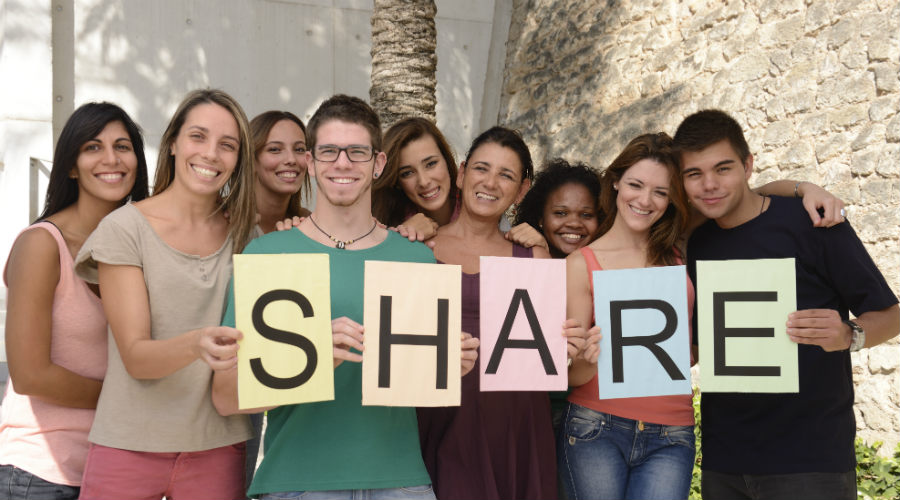
 |
| Reviews and Templates for Expression We |
How to engage millennials? Appeal to 3 core values, 3 core traits

Popular opinion says that millennials are different animal from the rest of the populace. And with millennials quickly moving through their 20s and 30s, the yet-to-be-definitively-labeled Gen Z'er is coming of age and becoming a more critical decision maker.
With all the conflicting information on millennials' relationship with social change, how do we successfully engage these generations in positive behavior change? Do they care about your brand's social impact? Do they actually align their spending with their values? Or are they so cash-strapped and overwhelmed with information that clicktivism is the most we can expect?
In reality, all generations share a set of core motivations that drive our decision-making (hint: it's not our rational thought). But millennials and Generation Z have grown up in a different context and with a new set of digital tools that also influence behavior.
To best mobilize this audience around your brand and mission, we need to understand what core values and trends that drive behavior change.
Core value 1: Belonging
This basic human instinct isn't something we comfortably discuss, but ultimately most people want to fit in. We want to be seen as socially conscious only so much as it sits within the expectations of our peer group.
Millennial embrace of the Toms Shoes brand is an example of a peer-driven business growth where social impact becomes synonymous with cool. Toms made it easy to take an impactful action, attracting a socially conscious millennial audience who take easy social actions such as online petitions, likes and shares.
Toms leveraged these influencers to mobilize their friends who wanted to be part of the club. The shoes became a proof of belonging.
Suddenly, the one-for-one model wasn't just another stodgy cause marketing program. One-for-one became a new category of social action, where the product becomes a badge of honor. With this in mind, we can treat behavior change like an innovative product launch, where we target early adopters first and use their influence to make that behavior feel like the default behavior in their community of peers.
Core value 2: Recognition
Within the confines of belonging, we like to also feel special and unique. If a particular behavior is perceived in our social circle as cool, we want to be recognized for that. Peruse your social media feeds and you'll likely notice your online community filled with "humblebrags" — casual shares of images and recent achievements that their peer group is likely to value and recognize through likes and comments.
Want your audience to recycle? Recognize that action in contexts and sharable formats that make them look cool.Global Citizen and EKOCYCLE did this skillfully with their #ADayWIthoutWaste mug shot campaign, showing fun pictures of friends at trendy events like SXSW and the Global Citizen Festival in Central Park confessing their crimes of waste and pledging to go waste-free for a day. The content is sharable with a fun backdrop and the context of events that builds social currency.
Core value 3: Need for ease
Outside of our deep-seated values, we will take the path of less resistance — the default action given to us.
You want people to recycle? Make your package easily and clearly recyclable and work with communities to make recycling the default action. To get people to recycle, communities should make their recycling container bigger than the waste receptacle, make sure recycling is picked up as or more frequently than trash and properly incentivize the behavior.
None of this means that generational differences don't exist. There are also some characteristics and trends unique to millennials and younger audiences. A few examples follow.
Millenial/Gen Z trait 1: Natural hackers
This is a generation of makers with their own Etsy stores. They've seen a shift from Hollywood celebrity to young celebrity entrepreneurs like Mark Zuckerberg. Teenagers are finding their own solutions global problems from the great Pacific ocean patch to clean water and energy .

Unilever wisely leverages these great minds with their young entrepreneurs program, thereby driving greater youth engagement. Let them help create the solution and build far more brand relevance and likely impact. Otherwise they might leave your company behind and start their own businesses that solve social issues and change the behavior of their generation.
Millenial/Gen Z trait 2: Diminished influence of geographic borders
The sphere of influence of young people includes good friends, neighbors and their vast digital community. According to a ShareThis report , Millennials are 3.6 times more likely than their elders to share online, so peer pressure extends far beyond local communities. This generation has seen the advent of the self-made social media and reality TV celebs.
Influencer status is well within reach of the average social-savvy teenager and 20-something and therefore the line between leader and follower has blurred. Instead of focusing on a single celebrity to motivate consumer action, distribute the message amongst a larger number of everyday influencers with strong social followings. It's like the Avon model for the twenty-first century.
Millenial/Gen Z trait 3: New lifestyles demand less ownership
These generations are driving the sharing economy. Our population continues to urbanize and live a less traditional lifestyle. Older millennials are getting married less and are making major purchases like houses and cars at lower rates than older generations.
New lifestyles and limited budgets have paved the way for new business models that leverage a service-based economy, requiring less individual ownership. Growing businesses such as Rent the Runway, car sharing serviceGetaround, and emerging player Yerdle all succeed at driving new behaviors based on these trends. Brands need to appeal to these new lifestyles. Brands getting wise to this shift are the ones skillfully claiming this new audience and staying on trend.
Home Depot, Walgreens and BMW are some of the companies dabbling in this movement. But the trend of big brands participating in the sharing economy is still nascent. To engage millennials and Gen Z in behaviors you want to drive, ride the waves of new behaviors that are already beginning to take hold. To drive the greatest impact, be sure to understand and consider the core human values driving behavior and the new contexts shaping these generations.
|
|
|
|
Copyright 2011 Energy and Technical Services Ltd. All Rights Reserved. Energyts.com |